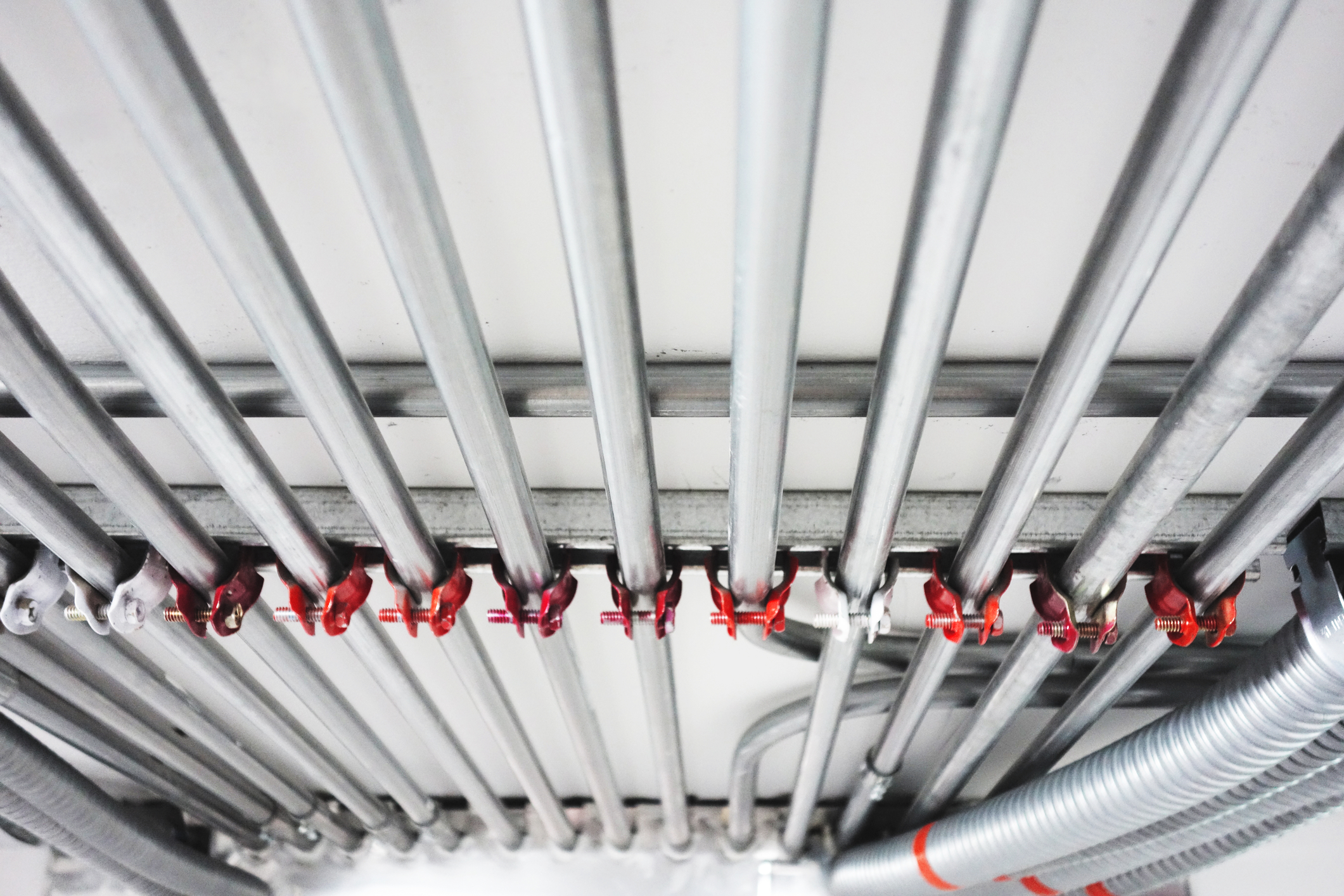Heavy material cost and labor dollars in the feeders!
As we continue to discuss the electrical estimating and take-offs, the most material-cost-intensive part is the electrical feeders. Pay special attention to wiring methods. Most of the time, you will be providing copper conductors, either in PVC, EMT, or GRC depending on the application. If the GC asks for an alternate for aluminum wire, you will have to upsize the wire and conduit sizes since aluminum wire does not carry the same ampacity ratings as copper. Make sure that the panel will accept the upsized wire. Although the National Electrical Code may state that you can use aluminum wire under certain conditions, the local code or the building’s standard may not. Confer with the AHJ if there is any doubt. Look at the riser. Often engineers upsize the conduit. If the project is a public bid opening, you should price exactly what you see on the drawings. However, for private jobs, you can size the conduit to code, but make sure that you qualify this in your proposal.
Switchgear and Panelboards
When applying labor to switchgear and panelboards, many estimators spend time “building” a panel, making sure they have all the labor for breaker fill. In my professional opinion, this is a waste of valuable estimating time. As an estimator, determine the average time to install a 200-amp panelboard, and use that in your estimate.
Make sure that you give your switchgear vendors enough time to quote the switchgear. Review your quote for completion. Beware of incomplete quotes! For generators, ensure that your quote includes the ATS’s, expensive load banks and testing.
Think about your electrical estimating and take-offs: How will you get your switchgear, etc. into the building? For existing buildings, is there room to bring these items in? For a new building, will you need rigging or a crane to set these items in place? If you are hiring a crane, check with your local jurisdiction about road closures and permits. Will they have to be set on a weekend, incurring extra costs? All should be factored into your take-off.
If mechanical disconnects are shown on the riser but will be provided on the equipment, make sure that your switchgear quote does not include them; and likewise, if you have to provide them, make sure your quote reflects that. We generally exclude generator fuel, start-up and testing. If you don’t exclude what you don’t “own,” you might end up owning it anyway.
Utilities
Another good chunk of your material costs with electrical estimating and take-offs will be the incoming utilities. Know your local code and what your local utility company provides. Often, the electrical contractor will own the incoming conduits, and the utility company owns the primary wire and transformer. Read the specs carefully to ensure that you are estimating the appropriate site conduit, noting the difference in price between GRC, Schedule 80 or 40 PVC. Do you own trenching and backfilling? That usually depends on the area of the country you are in. Do you own the transformer pad?
Reviewing the above items will help ensure you’ve done your homework with this part of electrical estimating and take-off.


I was digging around the internet to show a client that feeders, transformers, 3ph 480×240-120 and 3ph 480×208-120, switchgear and panelboards accounted for the major estimated cost of powering their factory which is moving to a new 26,000 sq ft building, just an empty warehouse.
Sure, three decades in electrical contracting and I already know what I know. I was trying to find corroborating info to help the dummies understand what they’re getting into. I wasn’t even trying to “win” the job.
Oops. Oh no! Now they only have three weeks to pull it off!
Thanks.